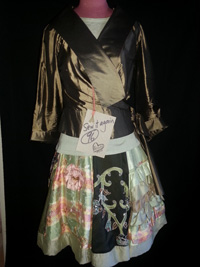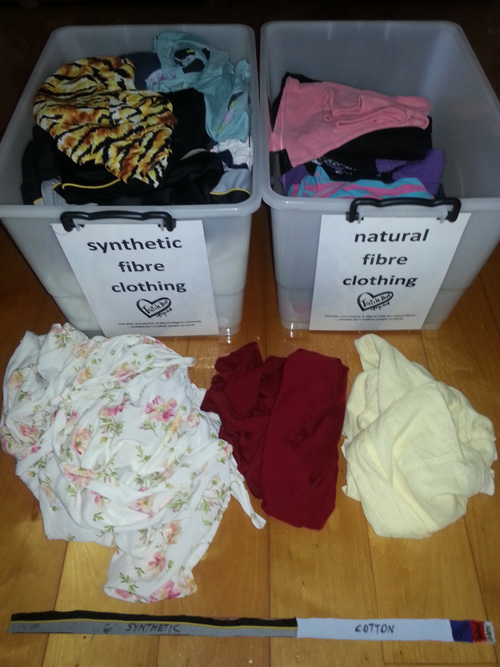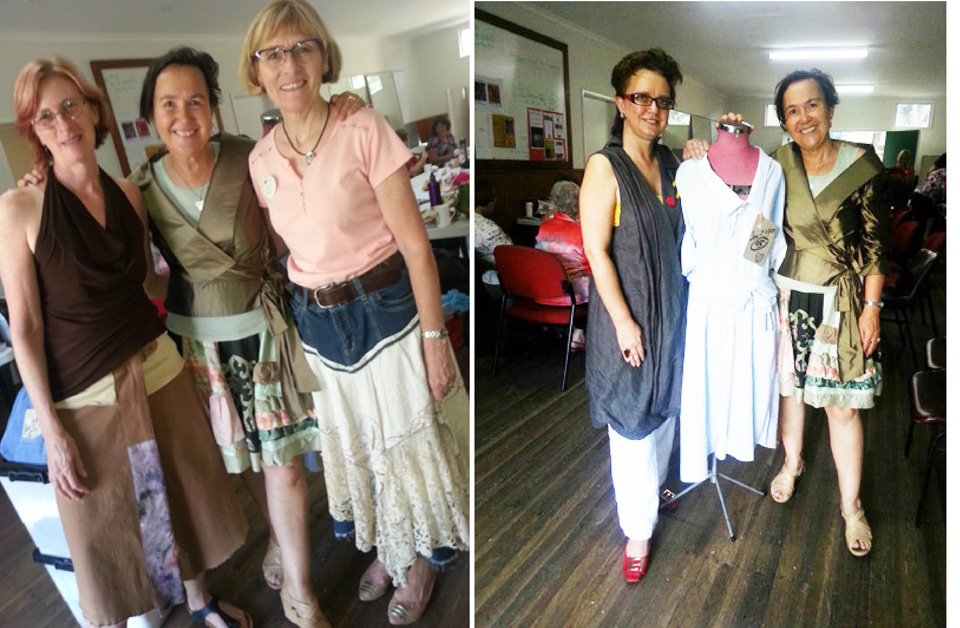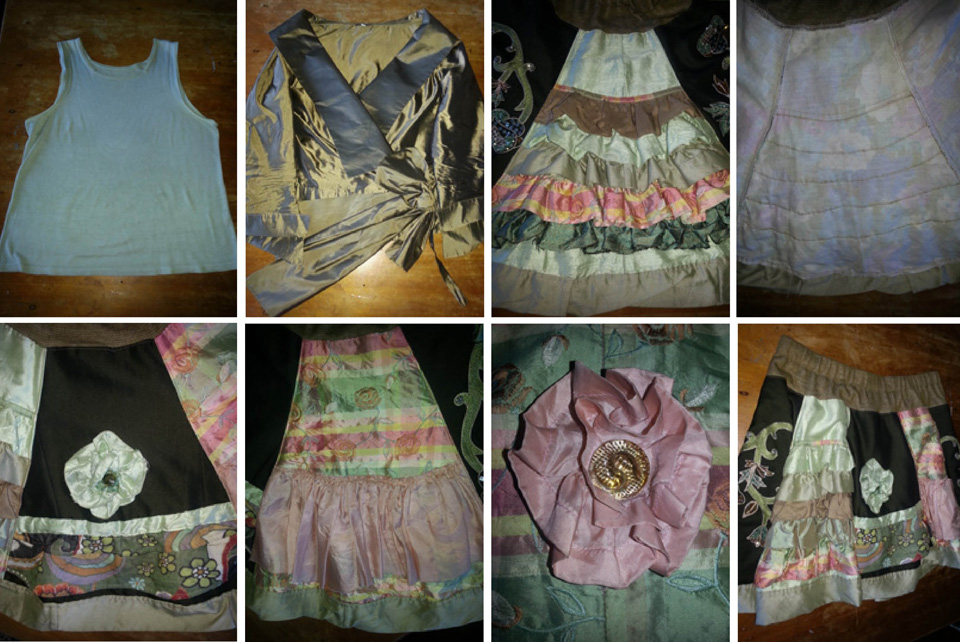 It is affirming to be around people who value your work, as it was for me yesterday meeting many wonderful women of threads at the Australian Textile Artists and Surface Designers Association Queensland social day.
It is affirming to be around people who value your work, as it was for me yesterday meeting many wonderful women of threads at the Australian Textile Artists and Surface Designers Association Queensland social day.
Upcycling existing clothing is not new but many have lost the skills and confidence it requires or are not prepared to spend time and effort in doing so. We all have different priorities and are at different stages of life, but textile artists, designers and quilters, get what I’m about.
A common first-world problem is wardrobes bulging with clothing – we often keep stuff we bought in previous years and (on average) we each go on to buy another 11kg of clothing every year, according to FAO fabric apparel statistics. Multiply that by 7 billion people in the world and you begin to appreciate the impact clothing habits have on global resource use and ecological health. Most of the rejects end up as landfill.
 To demonstrate what 11kgs of clothing looks like, I boxed up some cast-offs (thanks Sally) photographed right. To show fibre types, the synthetics nearly fill a 50-litre storage box, the cotton about half a box and the wool, linen and cellulose fibres are about one garment each.
To demonstrate what 11kgs of clothing looks like, I boxed up some cast-offs (thanks Sally) photographed right. To show fibre types, the synthetics nearly fill a 50-litre storage box, the cotton about half a box and the wool, linen and cellulose fibres are about one garment each.
In the front of this photo, there’s a measuring stick distilling the FAO figures from which I’ve calculated that on average, each person in the world is each year consuming 6.6kg synthetic, 3.74kg cotton, 400g cellulose fibres (eg viscose), 200g of wool and 150g flax/linen. In reality, the world is drowning in clothing. You almost can’t give it away except to third-world countries where most first-world cast-offs end up, leaving skill-displacement and disposal problems in their wake.
This information spurred me to action in 2014 with Sew it Again, a 365-day campaign of daily posting of repurposed garments with photos on ‘how to’ and words on ‘why it matters’. The project comes from my head and heart – it bridges memories of childhood, training as an agricultural scientist, communication skills, agribusiness networks, leadership study, love of nature and ecological health.
To feel supported in my endeavours by people such as the women of threads at the Brisbane Visual Arts Community hub, established through leadership by my friend and current president Lena Tisdall, was inspiring. ATASDA is just one of the many groups that use this new space, leased from Brisbane City Council, with others including quilters, embroiderers, spinners and weavers, and more.
Merody Buglar, left in photo below, is chair of 2QAQ Queensland Quilters and Art Quilters and to my right is Joanne Jayne, ATASDA Queensland secretary – both wearing their own fabulous upcycled skirts. The other photo is ATASDA Queensland president Jola Szymczyk, with model Mabel in Sew 95 and I.
My History Skirt is now Sew 96, made last year from pieces of about six reject silk garments found in op shops which I developed into eight panels before sewing together in a circle, adding a stretch waistband and trimming the a silk border. I backed most of these silk panels with linen, to provide firmness and stability. The flowers were created from strips of already hemmed fabric, pulled together with a gathering thread, and a glass vintage button in the centre. The beaded panels were cut from a $20 op-shop-found caftan which had never been worn, and I have more of it stashed away for another upcycle. The silk singlet and jacket were both op-shop found and remain as is.

